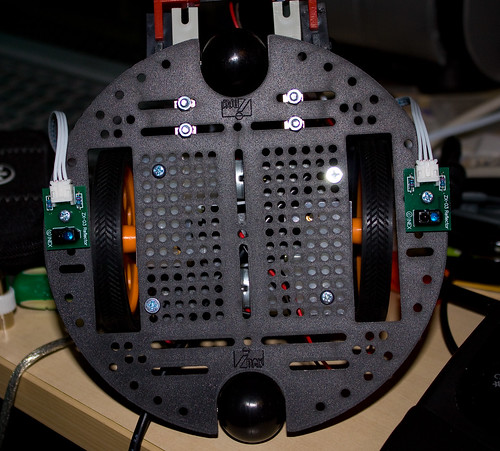Using the Texas eZ430 Watch with the .NET Micro Framework
 Friday, May 20, 2011 at 07:59PM
Friday, May 20, 2011 at 07:59PM Some time back I got a Texas Instruments EZ430-Chronos watch. One of my better investments. For only fifty dollars you get an LCD watch which you can program. What’s more, it contains a whole bunch of sensors and can communicate with a host device over a wireless link. Around the same time I got a ChipworkX board from GHI Electronics.
So, one lunch hour I decided to try and make them work together. It turns out to be very easy. The watch has a wireless connector (you can just see the PCB at the top of the picture) that appears as a USB serial port to whatever you plug it into. Since the ChipworkX board has USB hosting and serial port support it was an easy matter to get the two talking. A bit of searching and I found the accelerometer protocol for the watch, and away we went.
If you are interested, I’ve created a Watch class that abstracts the watch behind an object that will fire off events when the watch delivers new accelerometer readings. You can find a sample .NET Micro Framework project here.
 Rob |
Rob |  Post a Comment |
Post a Comment | 
